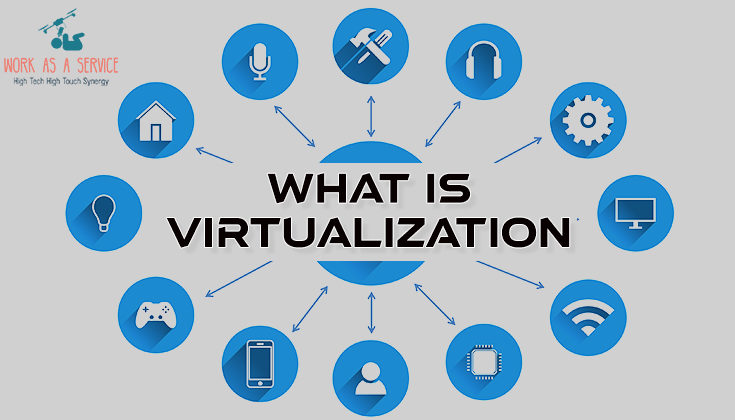
What Is Virtualization And
How Does It Benefit Cloud Computing?
Virtualization is a revolutionary technology that has enabled businesses to operate more efficiently and cost-effectively.
By allowing the use of multiple virtual machines, or VMs, within the same physical computing environment, virtualization has enabled cloud computing to become more accessible and reliable.
This technology has given organizations the ability to quickly provision and scale computing resources while reducing the amount of physical hardware needed.
In this introduction to the basics of virtualization and its benefits to cloud computing, we will explore how virtualization works and the advantages it brings to businesses.
We will also discuss some of the challenges to consider when implementing a virtualization strategy. By the end of this article, you should have a better understanding of how virtualization can benefit your organization and how to get started.
What Is Virtualization?
Virtualization is the process of creating a “virtual” version of something, such as a physical computer system. This virtual version can then be used instead of the real thing.
The term virtualization was first coined by IBM in 1956 to describe the computer simulation of a “virtual computer” through a new programming language.
IBM’s virtual computer did not require physical hardware to run its program.
This concept of running a computer program without the need for physical hardware has been around for decades. In the past, computer scientists have referred to this concept as “virtual machines” or “VM”.
Benefits Of Virtualization For Cloud Computing
While virtualization can be used in many different scenarios, its primary function is to create a VM that acts as a stand-in for a physical server.
There are several benefits of virtualization for cloud computing, including:
- Increased scalability
- Virtualization enables organizations to quickly scale up or down their computing resources. Rather than adding or removing physical servers, IT departments can add or remove VMs with minimal effort.
- This capability makes it much more cost-effective and scalable to adjust the size of your data center in response to spikes in demand, while also avoiding the cost of buying more hardware.
- Reduced risk of data loss - Since VMs are software-based, they can be easily backed up.
In the event of a hardware failure, virtualization enables organizations to quickly recover and restore their VMs. In contrast, if a physical server fails, you may not have a good backup. This could result in important data loss or even business disruption if you don’t have an effective disaster recovery plan in place.
Challenges Of Implementing A Virtualization Strategy
While virtualization is a revolutionary technology, there are some challenges to consider before implementing a virtualization strategy.
How do you know if your applications, data, and business processes are ready for virtualization?
This can be a tricky question to answer, but there are a few signs that can indicate you’re ready for virtualization:
- You have a reliable IT operations team: Virtualization is a complex technology that requires advanced skills. Before implementing a virtualization strategy, your IT team should have the necessary skills and experience. Ideally, they should also be able to support a 24/7 environment without much assistance.
- You have standardized IT environments: Since virtualization enables you to rapidly create and destroy VMs, it’s important to have standardized IT environments.
This way, you can quickly create new VMs in a standardized environment. Otherwise, you could waste significant time creating VMs manually.
How To Get Started With Virtualization
Now that you know what virtualization is and its benefits to cloud computing, it’s time to get started with this technology.
Here are some tips to help prepare your organization for virtualization:
1. Make sure your applications and data are ready: Before you begin, make sure your business applications and data are ready for virtualization. If you have multiple applications, consider grouping
them. This will help you develop a single strategy for all applications.
2. Plan for scalability: As we mentioned earlier, one of the biggest advantages of virtualization is its ability to scale. Before you get started, make sure you have a plan for scaling your VMs. This means you should have a standardization strategy in place, as well as a disaster recovery plan.
3. Choose a virtualization software provider: There are many different virtualization software providers on the market. Before choosing one, make sure it meets your organization’s specific needs.
Conclusion
Virtualization is a powerful technology that has enabled businesses to run more efficiently and cost-effectively. Virtualization enables organizations to quickly provision and scale their computing resources while reducing the amount of physical hardware needed.
There are many benefits of virtualization for cloud computing, including increased scalability, reduced risk of data loss, and reduced complexity of IT operations.
